The Intersection of Materiality, Community Engagement, and Placemaking
$9.98 Issue 25 June 2025 University Landscape Planning and Architecture School of of Calgary


The Intersection of Materiality, Community Engagement, and Placemaking
$9.98 Issue 25 June 2025 University Landscape Planning and Architecture School of of Calgary

04
Introduction
Collaborative Workflow
06
Material Experimentation Techniques
Outdoor Installation
Material Combination
16
Material Participation What Do You Represent?
Message in a Bottle Pause & Weave!
20
Co-creation Pop-Up Loom
22
Cardboard Bench Survey The Maker’s Experience with Materials
24
Gamification Playful Materials Connected Clusters
30
32
36 Reflection Maker’s Reflections
Co-Creation as Assemblage Actor-Network Relations A Multi-Layered Framework of Practice
Acknowledgement
This publication originates from the research conducted by students from the School of Architecture, Planning, and Landscape (SAPL) at the University of Calgary in winter semester 2025. The project focuses on collaborative practice and material exploration, examining how co-creation processes are influenced by the interaction among individuals, materials, and spaces. Amid growing interest in co-creation, this discourse has become increasingly significant. Material is not merely a medium of construction; it serves as a communicative, symbolic, and relational agent that invites, resists, and transforms participation. The project unfolds through several interconnected phases. Material Experimentation explores techniques and installations using accessible materials such as yarn, paper, and wood. Material Participation introduces public installations, inviting individuals into reflective and tactile forms of engagement. Co-Creation tests the capability of materials for collective making. A survey gathers insights from the team’s material experiences. These actions are complemented by a Reflection and a concluding theoretical layer, Co-Creation as Assemblage, which introduces ActorNetwork Relations and a Multi-Layered Framework of Practice to analyze its collaborative and material dimensions. Together, these components frame a dynamic inquiry into how making—with and through materials—becomes a space for dialogue, community building, and shared authorship.
Week 8-12: Game Prototyping (Connected Clusters)
Week 7: Game Ideation
Week 3: Material Combination
Week 2: Material Outdoor Installation (durability test)
Week 1: Material Experimentation (three techniques)
Collaborative Practice & Material
Week 4: Participation Tests
Week 6: Cocretaion / Circular Placemaking
Week 5: Cocretaion / Participatory Capabilities
Techniques
Paper
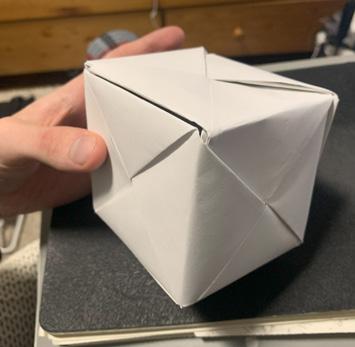
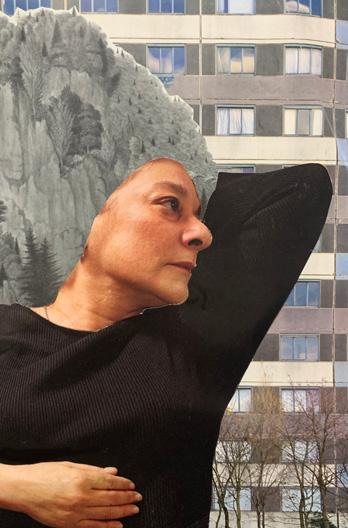
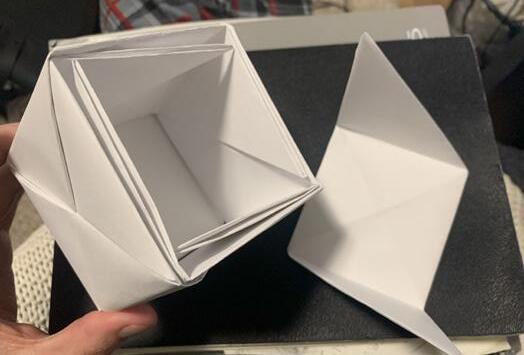


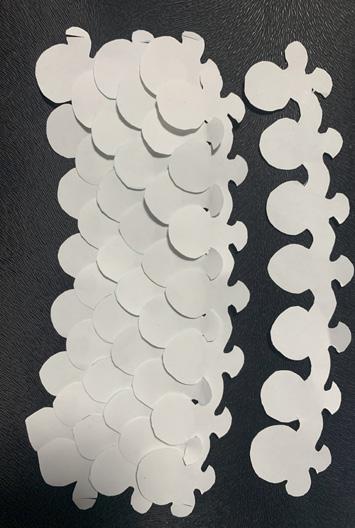
Wood

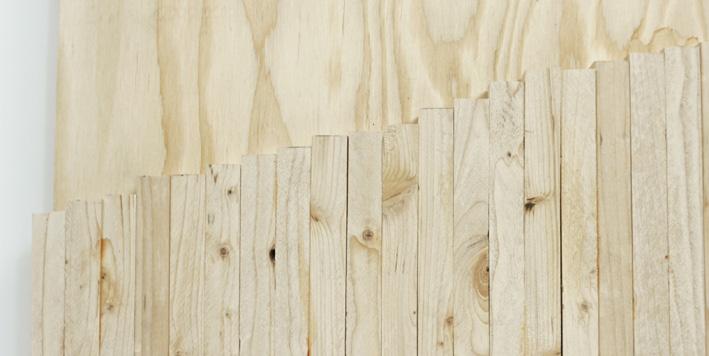
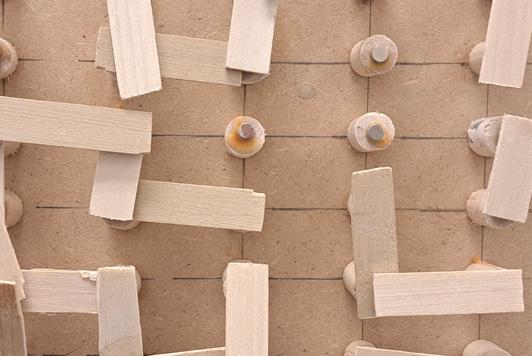

Cutting
Folding
Layering
Staining with Household Liquids
Cutting
Mounting Magnet
Food
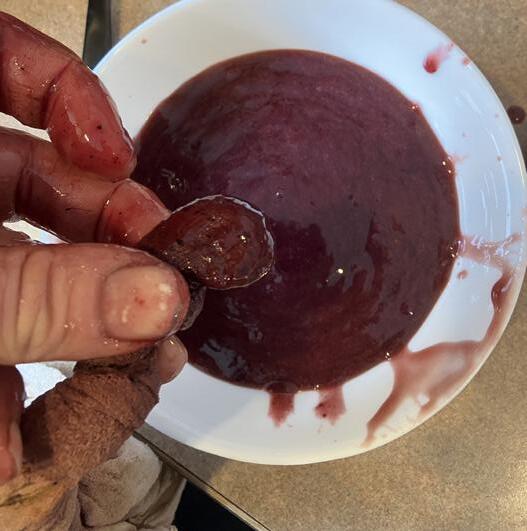


Material experimentation is an open and inclusive practice that employs everyday materials as catalysts for collective creativity. By utilizing everyday materials— such as paper, wood, fabric, yarn, plastic, food residues, and bacterial cellulose— material exploration becomes democratized, enabling individuals from any background to prototype, question, and reimagine the use of materials in experimental and collaborative ways. This approach invites playful and hands-on exploration, where everyday activities or simple games are reimagined through material experimentation.
A magnetic board game inspired by Dots and Boxes provides an illustrative example of material experimentation. Crafted from repurposed scrap wood and magnetic tokens, the game invites players to draw connections—not with pens, but by placing wooden pieces fitted with magnetic pegs to form boxes. This tactile, collaborative reinterpretation transforms strategic play into a material-driven exploration. The game exemplifies how familiar formats can be reimagined as tools for creative engagement, encouraging participants to interact with materials—and with one another—in innovative and meaningful ways. It emphasizes inclusivity, reuse, and co-creation.

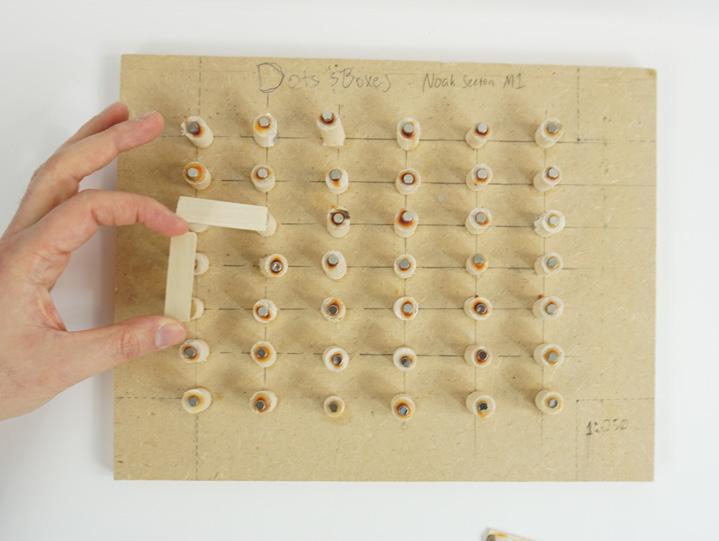



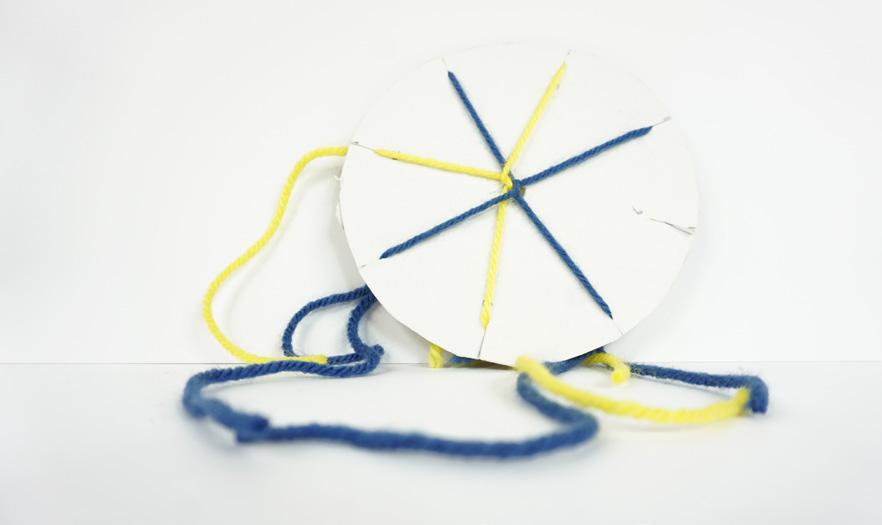

Cardboard Loom
Yarn Threading
Slit Cutting
Weaving


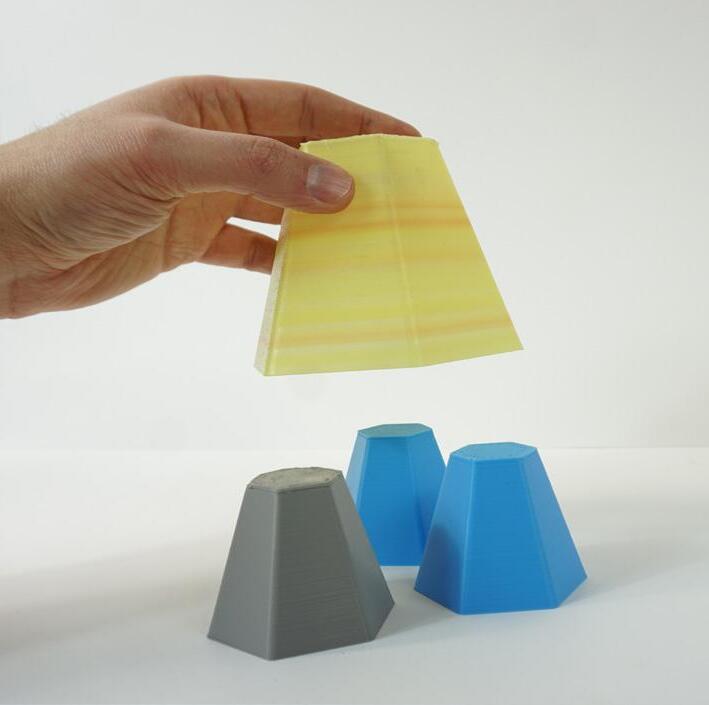

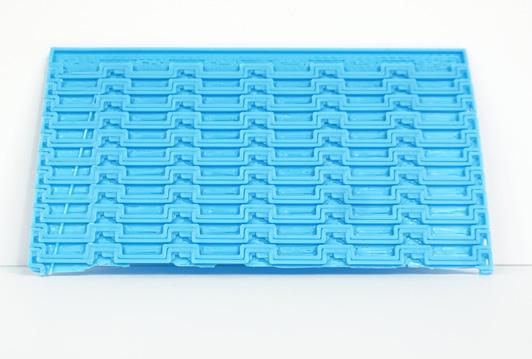
Kumihimo (Japanese Braiding) Bracelet Making
Hand Sewing Denim Knotting
Plastic Waste Filament 3D Printing
Material experimentation is guided by four core principles. First, accessibility involves utilizing low-tech methods and readily available materials to reduce barriers to participation. Second, adaptability embraces each material’s unique qualities and encourages open-ended, iterative exploration. Third, embodied learning emphasizes hands-on techniques such as cutting, knotting, and weaving to activate tacit knowledge. Fourth, knowledge sharing supports the exchange of locally grounded knowledge and culturally embedded practices. For instance, using a bamboo skewer loom with warp threads and yarn for hand weaving exemplifies all these principles. The loom is a simple tool made from accessible materials. It supports adaptability through variations in yarn type and color. The hands-on process fosters embodied learning, while documenting the steps and drawing on local weaving traditions to promote knowledge sharing.


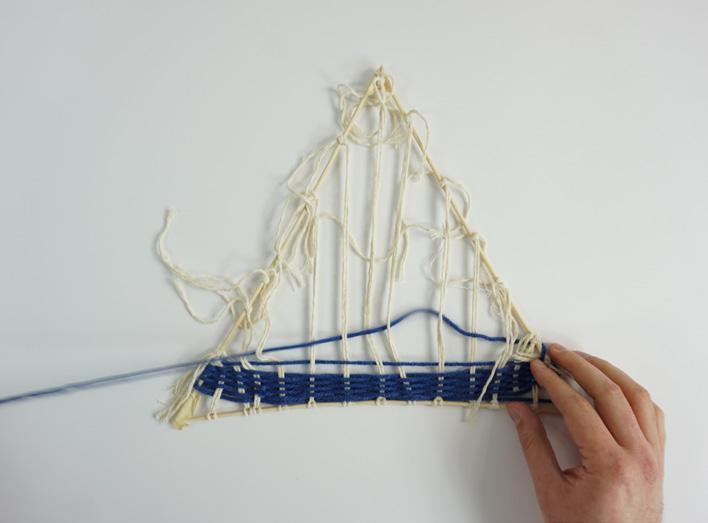

Bacterial cellulose
Bacterial cellulose is a natural material produced through the fermentation of sweet tea by a symbiotic culture of bacteria and yeast (SCOBY). This project explores its potential as a lightweight, biodegradable material for material exploration and collaborative design, using accessible ingredients and low-tech methods. The key materials include sweet tea, a live SCOBY, jewelry wire, and natural fibers such as grass.
The process begins with fermenting the tea in shallow containers for one to two weeks, during which the SCOBY forms a thick cellulose membrane. After harvesting, the membrane is cleaned and air-dried for two to ten days, depending on its thickness. Jewelry wire is then shaped into skeletal forms, and the dried cellulose sheets are cut, stretched, and applied over the wire structures. Grass fibers may be embedded or layered to enhance the strength, texture, and visual interest, resulting in sculptural forms that blend organic growth with crafted structure.

Light and Bacterial
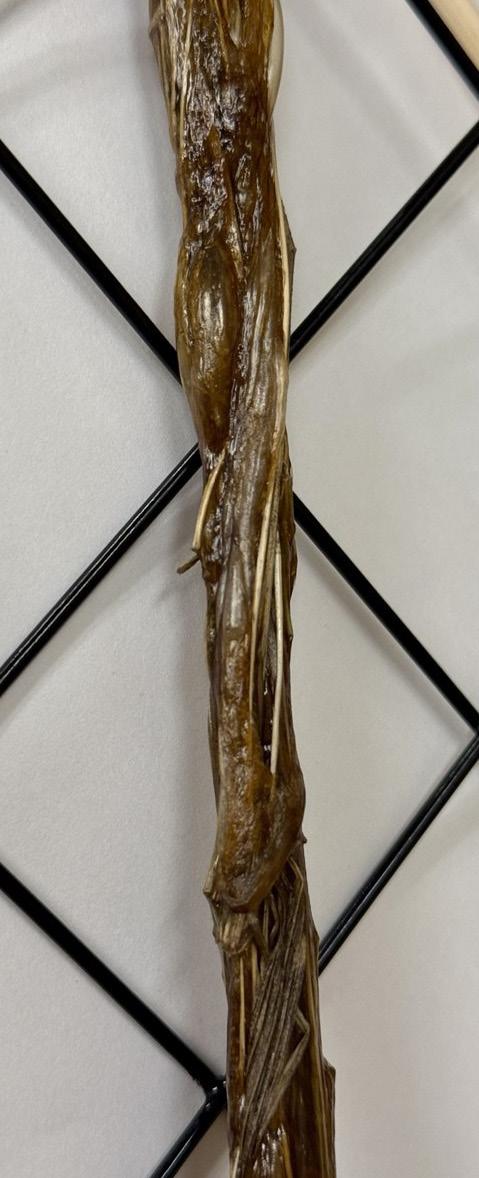
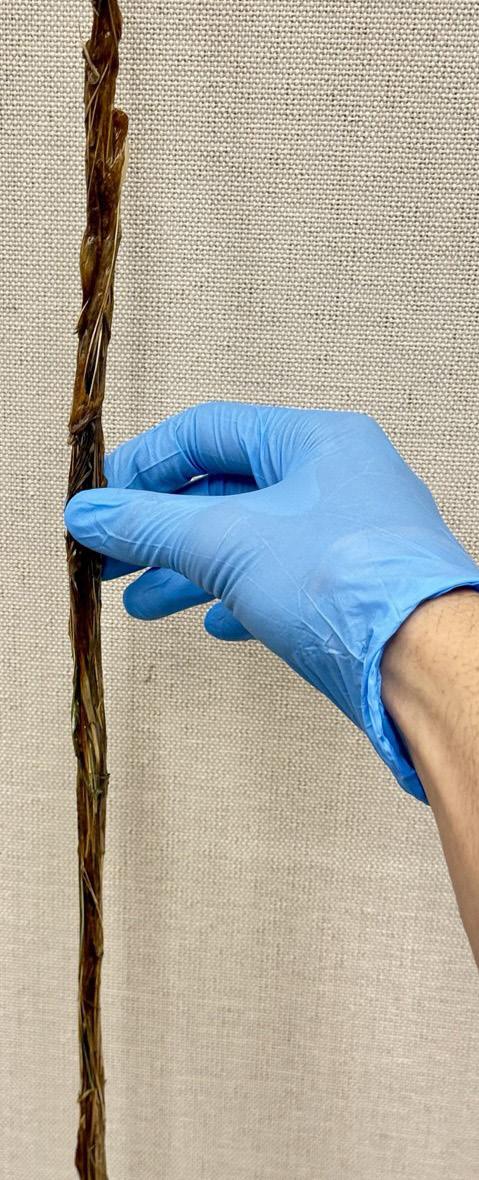
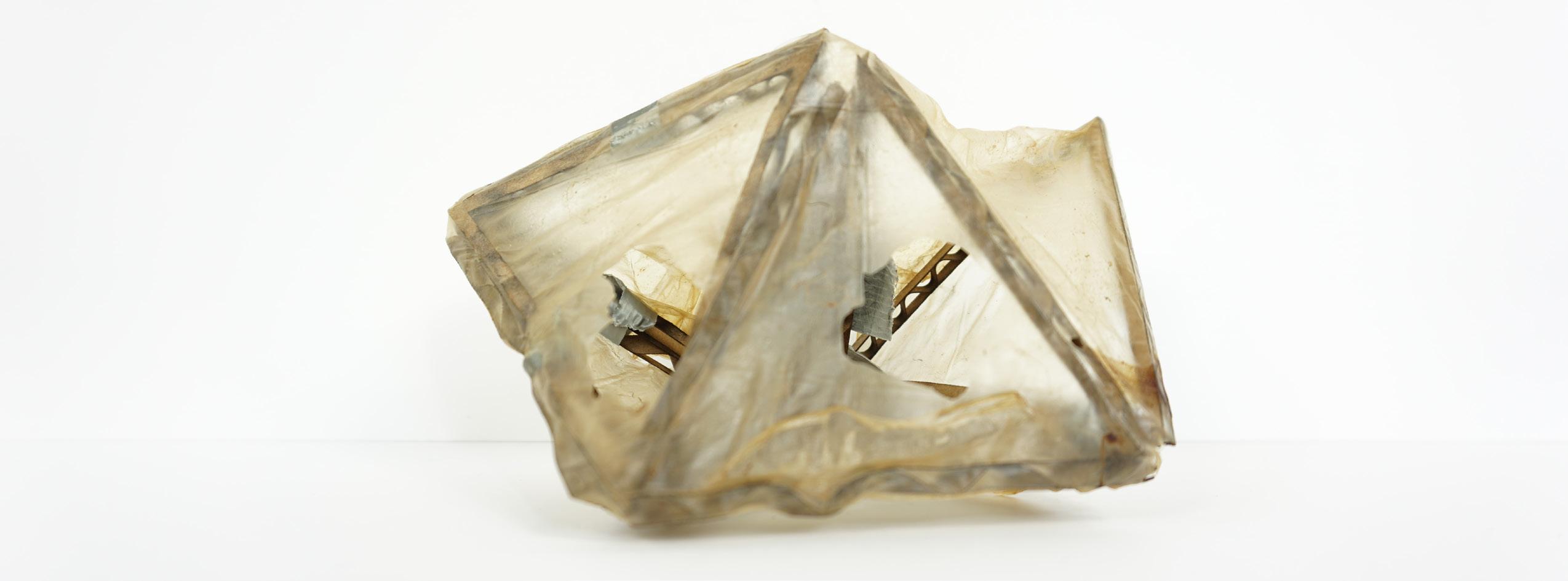
● Sculptural Assembly
● Kombucha Fermentation
Brewing sweet tea with a SCOBY initiates the cellulose-forming process.

● Harvesting & Drying the SCOBY Membrane
Once thickened, the membrane is removed and air-dried for shaping.

● Stretching Cellulose over Wire Forms
The pliable cellulose is molded over frames to define structure.
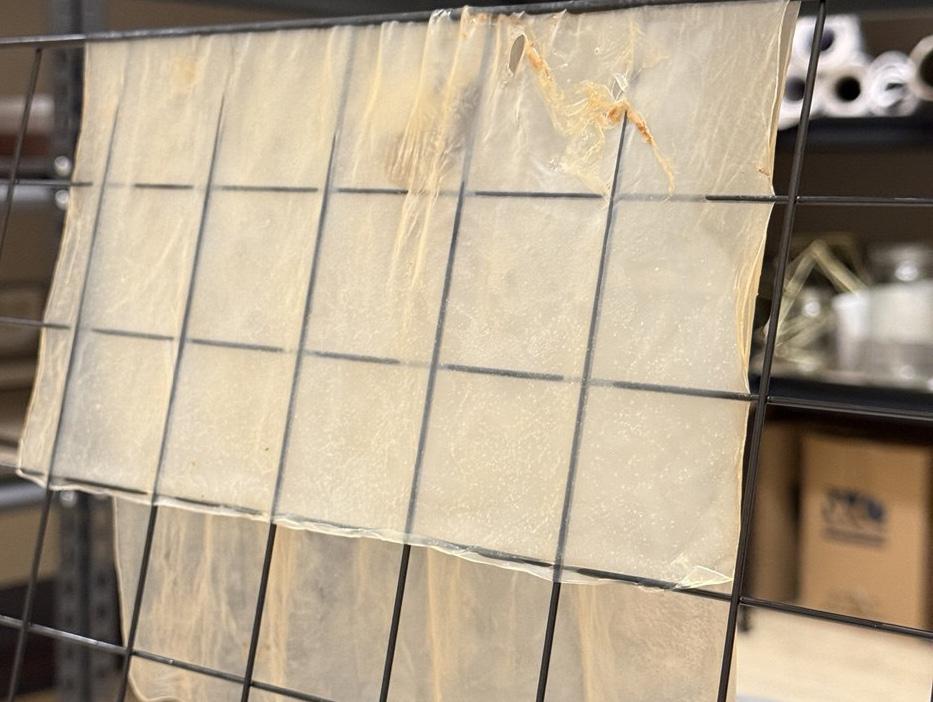
● Formed and Dried Cellulose Sheets
After drying, the material takes on a papery or leathery texture.
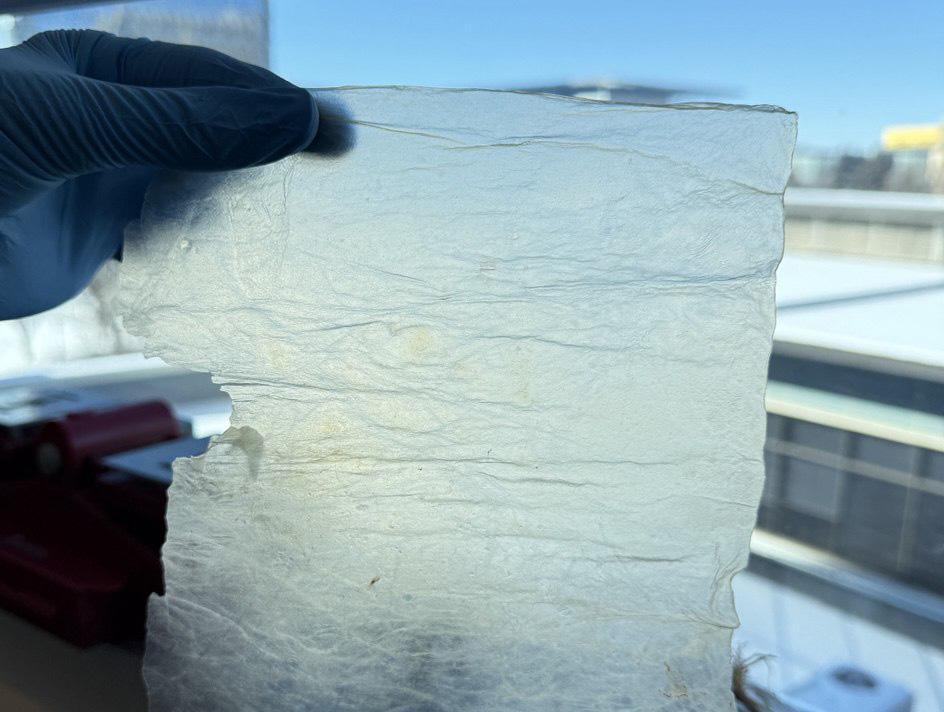
● Incorporating Grass Fibers
Blending in grass fibers adds visual richness and tensile qualities.

Paper Type Properties

● Firm
● Cuttable
● Templatable
● Foldable
Test Forms
1. Topography (cut/layered)
2. Mini Table (cut/templated)
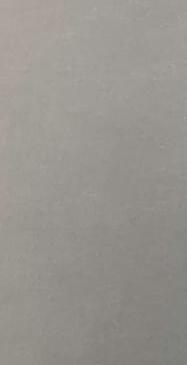
● Plastic-like
● Waxy
● Water-resistant
● Foldable
● Firm

● Accessible
● Foldable
● Cuttable
● Layerable
● Vulnerable
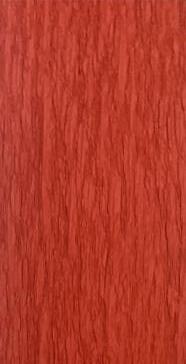
● Fabric-like
● Braided/weaved
● Decorative
● Delicate
● Poor foldability
3. Crane (folded)
4. Lantern Fish Scales (cut/templated)
Results Insights
● Absorbed most water
● Lost structural integrity
● Table surface trapped snow and ice
● Topography weakened
● Best for cutting/ layering, needs shelter or sealing; not ideal for exposed snowy conditions
5. Crane (folded)
6a. Collage (inked/glued)
6b. Multimedia Collage (mixed/glued)
● No water absorption; crane undamaged; fish scales showed creasing from layered fine cuts
● Ideal for intricate designs needing weather resilience
7. Woven Strips (layered)
8. Braided Strips (woven)
● Survived better than expected; minimal water damage; ink didn’t bleed; collages remained intact
● Versatile, better-than-expected durability if protected
● Woven strip less water-absorbing; braid absorbed more water due to ridges; both retained shape
● Weak but weavable; useful for texture/decoration if protected
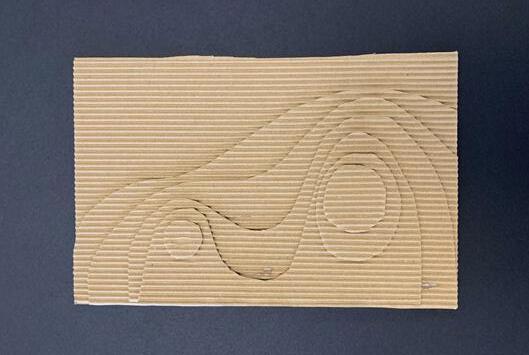




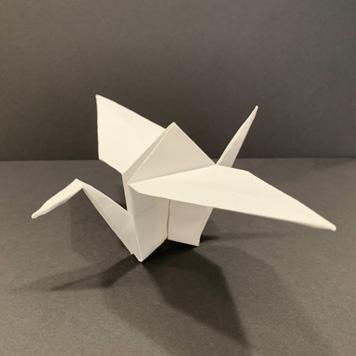


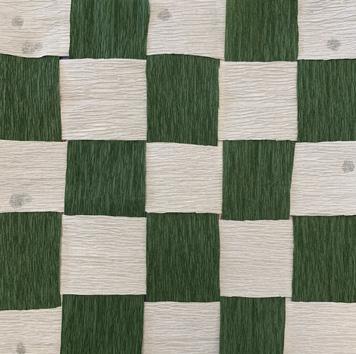
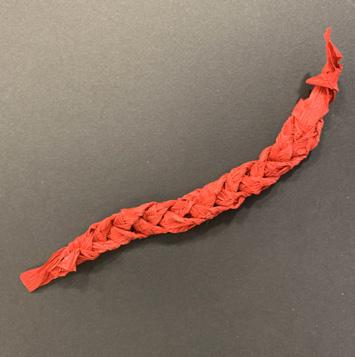
The winter durability test evaluated four types of paper materials, each with different levels of workability, techniques, and durability over a 48-hour period. The test conditions included strong winds, temperatures below -20 °C, and significant snowfall.
Outdoor Installation
Installation

Ojo de Dios (Eye of God) weaving is produced by wrapping colorful yarn around a cross-shaped wooden frame. Initially crafted indoors and later installed outdoors, it is suspended from a broken tree branch beneath a pergola, where it interacts with light, snow, and wind, contributing a dynamic visual element to the environment. With origins in Indigenous traditions—particularly as a ritual object for the Huichol people of Mexico—the Ojo de Dios embodies meanings related to spirituality, community, creativity, and cultural continuity. Its minimal material requirements and straightforward technique make it an inclusive and accessible craft, encouraging participation from individuals of diverse ages and backgrounds.
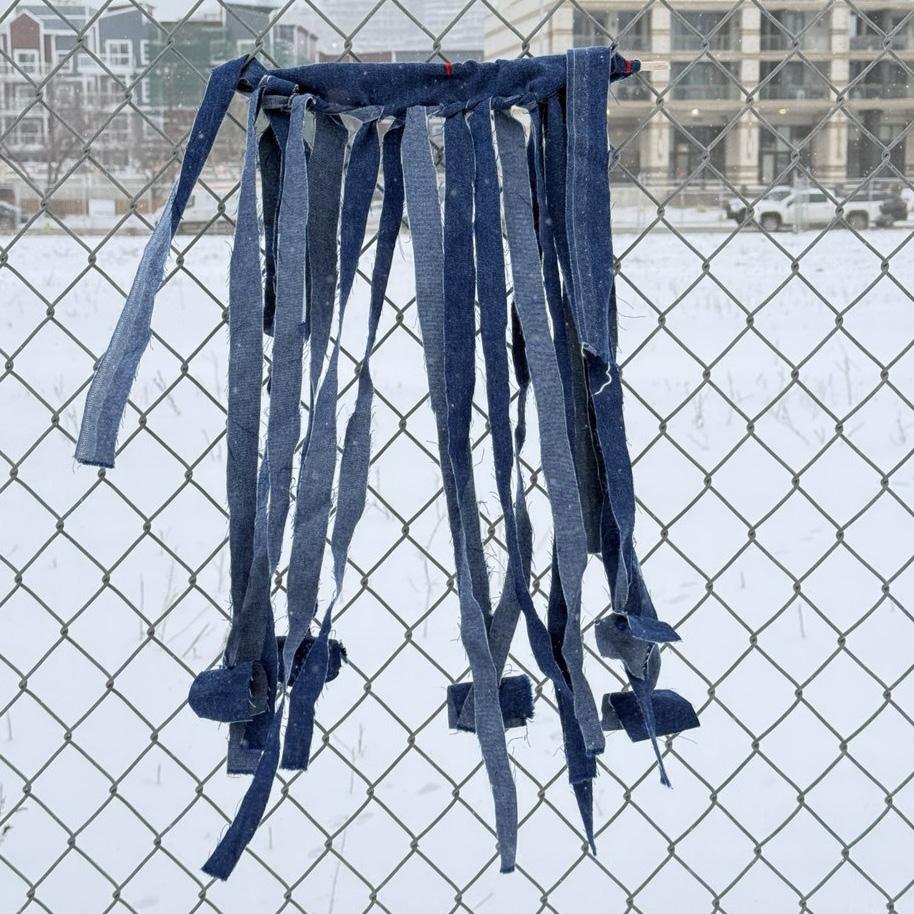

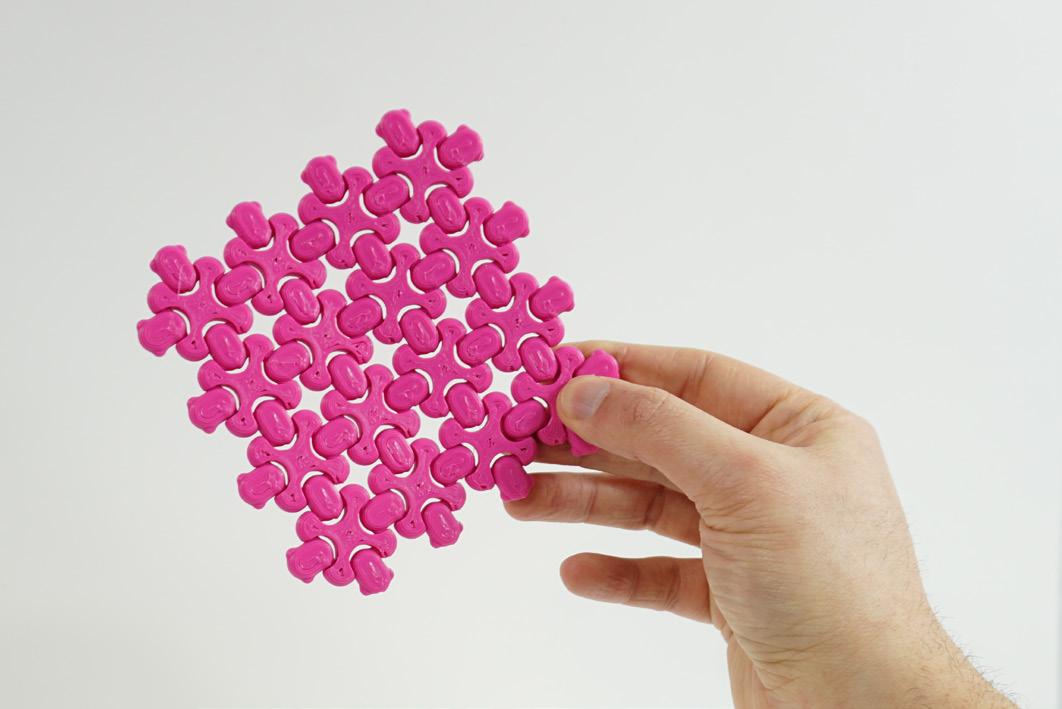
Yarn-Wood Polyhedron


Paper-Denim Fusion

Sphere
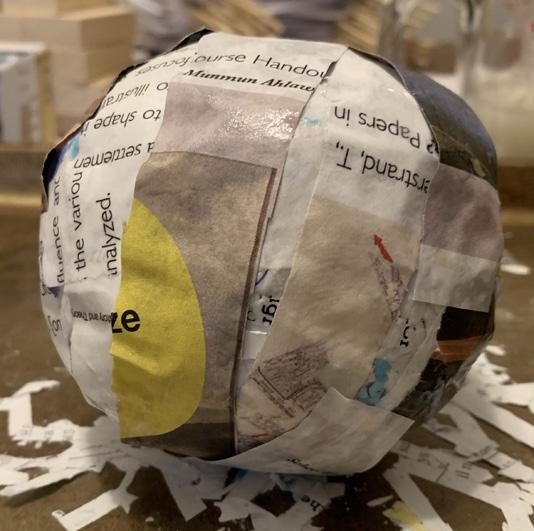
A combination of paper and denim fabric is utilized to highlight the contrast between the rigid nature of paper and the flexible, textured quality of the textile. This combination explores how stiffness and softness can inspire diverse design and prototyping.
Paper-Wood Foldable Prototype
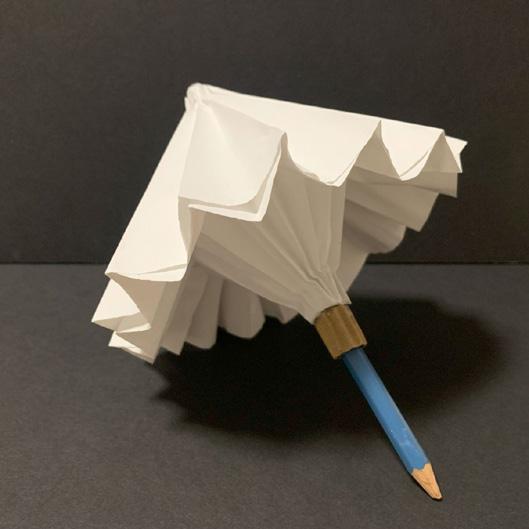

Wooden sticks and yarn are used to construct a polyhedral structure. Yarn is wrapped around the intersections of the sticks to reinforce the joints and create a stable frame. Subsequently, weaving techniques are applied across the surfaces of the polyhedron, covering the structure with a textured layer.
A papier-mâché sphere is created by layering torn paper with a mixture of glue and flour over a round form. Once it has dried, it forms a firm, textured surface with patterns, illustrating a simple crafting method for prototyping and design.
Paper and wood are combined to create a small origami-style umbrella. This combination illustrates how lightweight, lowcost paper structures, when reinforced by wood, can fulfill functional purposes, such as offering temporary shelter.
What Do You Represent? explores the concept of engagement boards by inviting individuals to respond to the question by writing directly on paper. The session began with a two-hour period of facilitated interaction and was then left unattended for the rest of the day to encourage spontaneous participation. Of the 62 boards available, 40 were filled with responses. This blend of guided and independent interaction offers insight into how people connect with reflective prompts, capturing a snapshot of identity and self-expression in a shared public context.
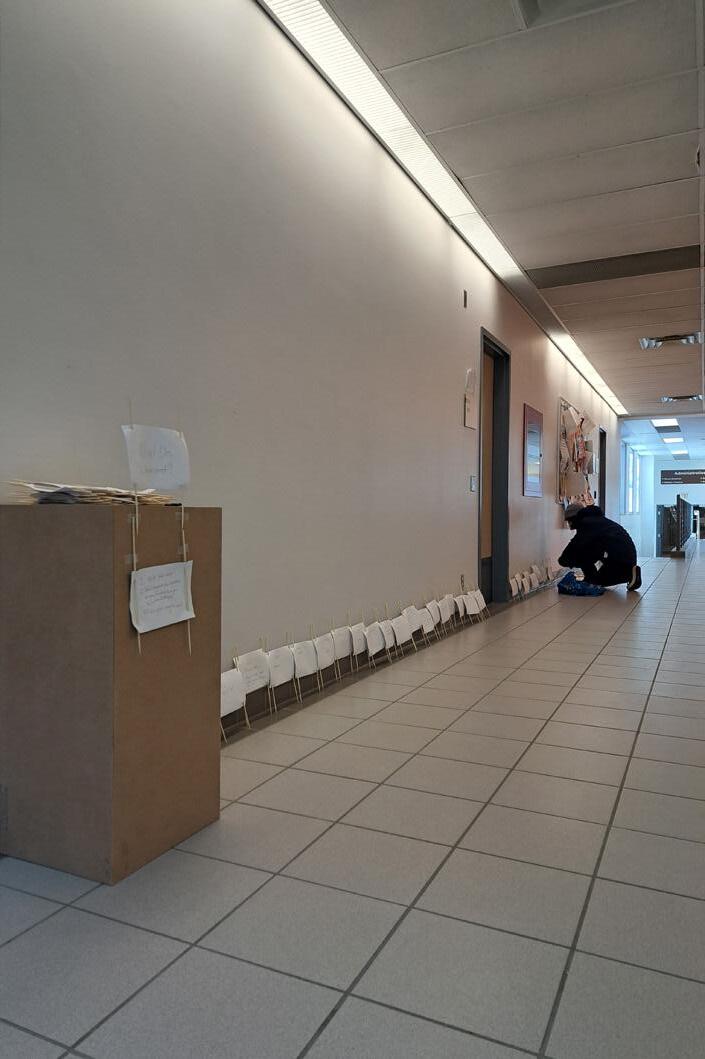

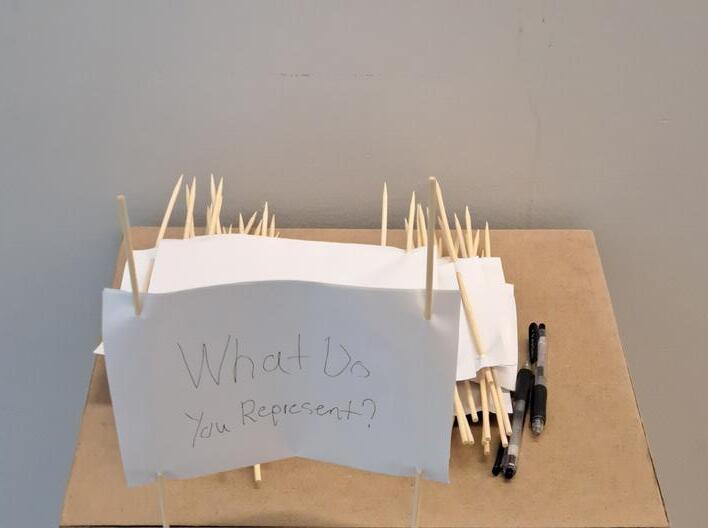
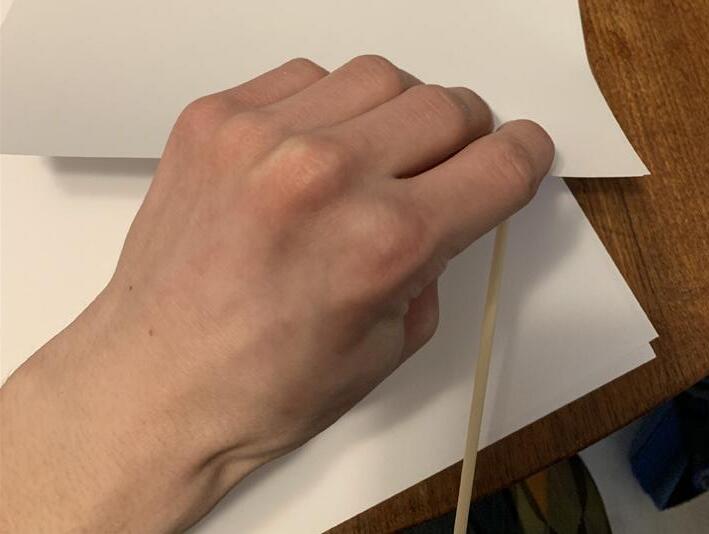
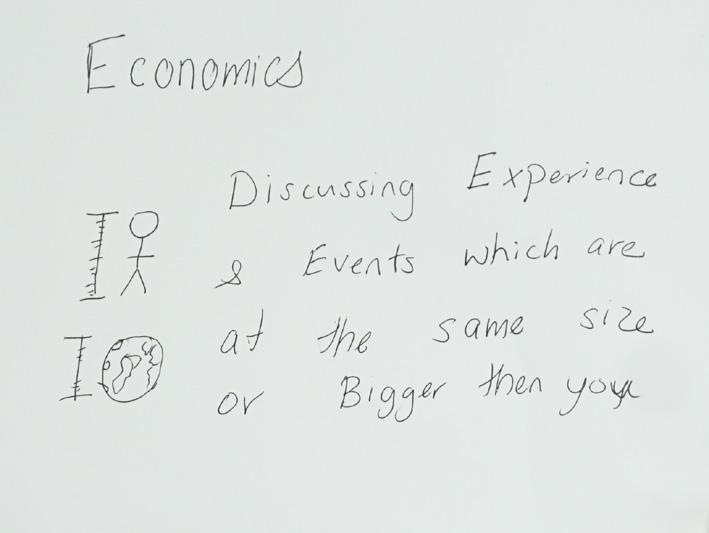
Participant Responses
Message in a Bottle invited university students to participate in an activity focused on sharing positivity during periods of high stress, utilizing simple materials such as paper, ribbon, and bottles. In the initial phase, a booth located outside the science theatres encouraged individuals to either leave or take uplifting messages, facilitating both active and passive engagement. Contrary to expectations that time-constrained students would primarily take messages, most participants opted to both give and receive. In the subsequent phase, conducted without a facilitator, this trend persisted—students left more messages than they took. The project fostered spontaneous connections and a sense of community in a typically transient hallway, transforming it into a vibrant space for sharing. Participants were attracted by the novelty of the bottle as a keepsake and the emotional significance of handwritten messages. The overwhelmingly positive response, characterized by enthusiastic participation and dialogue, underscored a profound desire for community and kindness, demonstrating the power of small actions to foster meaningful social interaction in everyday environments.
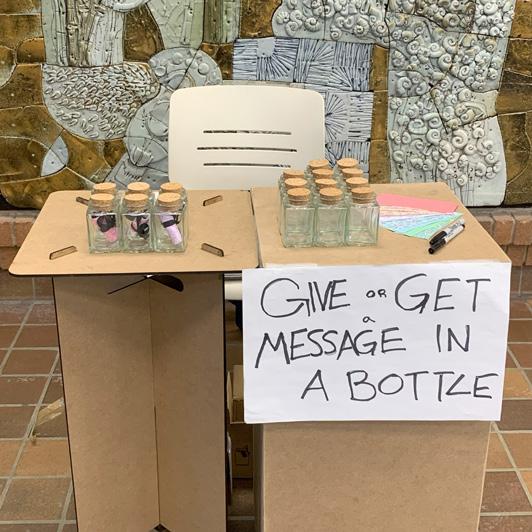
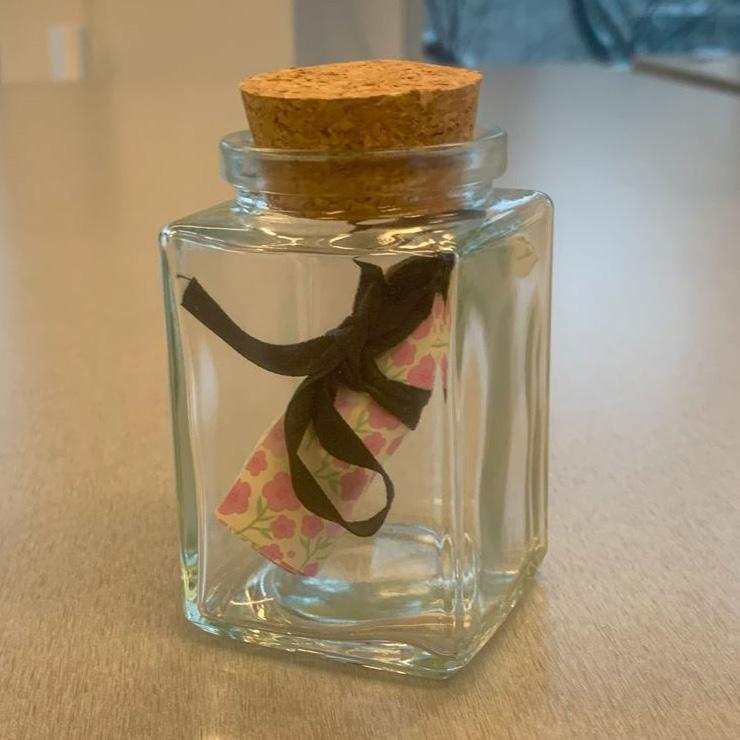
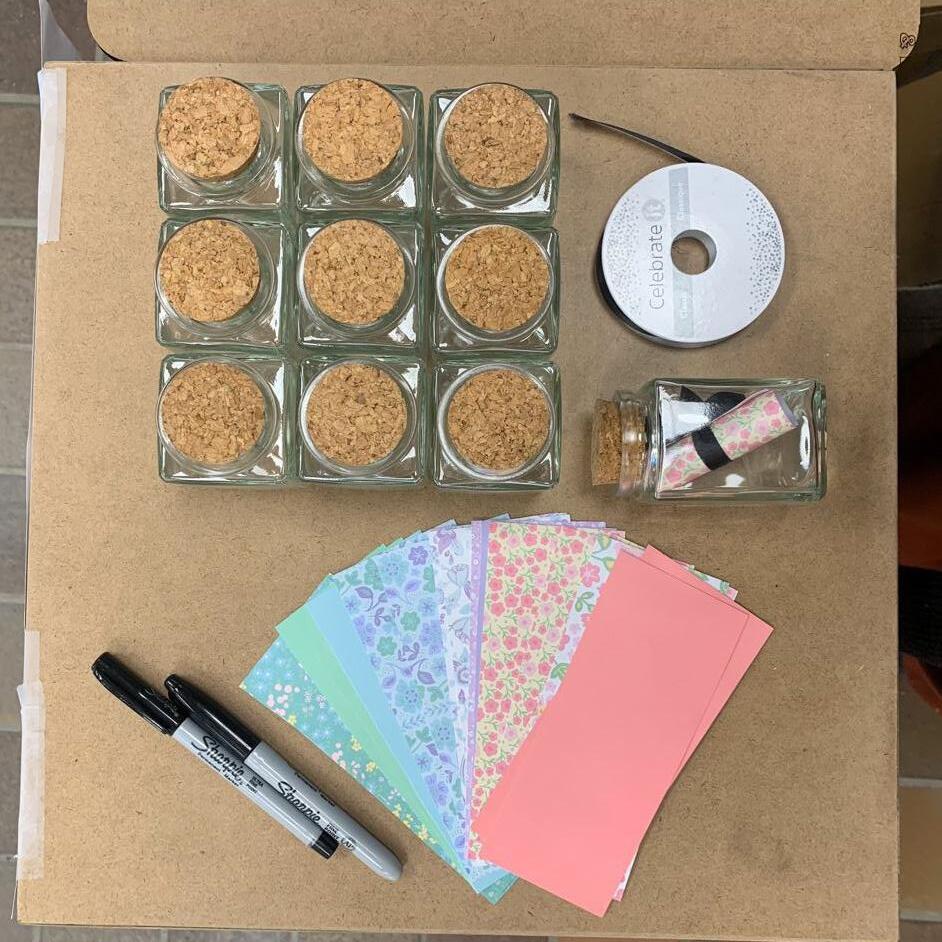
Pause & Weave invites individuals to engage in a hands-on weaving process using yarn. By pausing to contribute a knot, loop, or weave, participants collectively build a textured surface over time. This evolving installation emphasizes material participation as a form of mindful engagement.

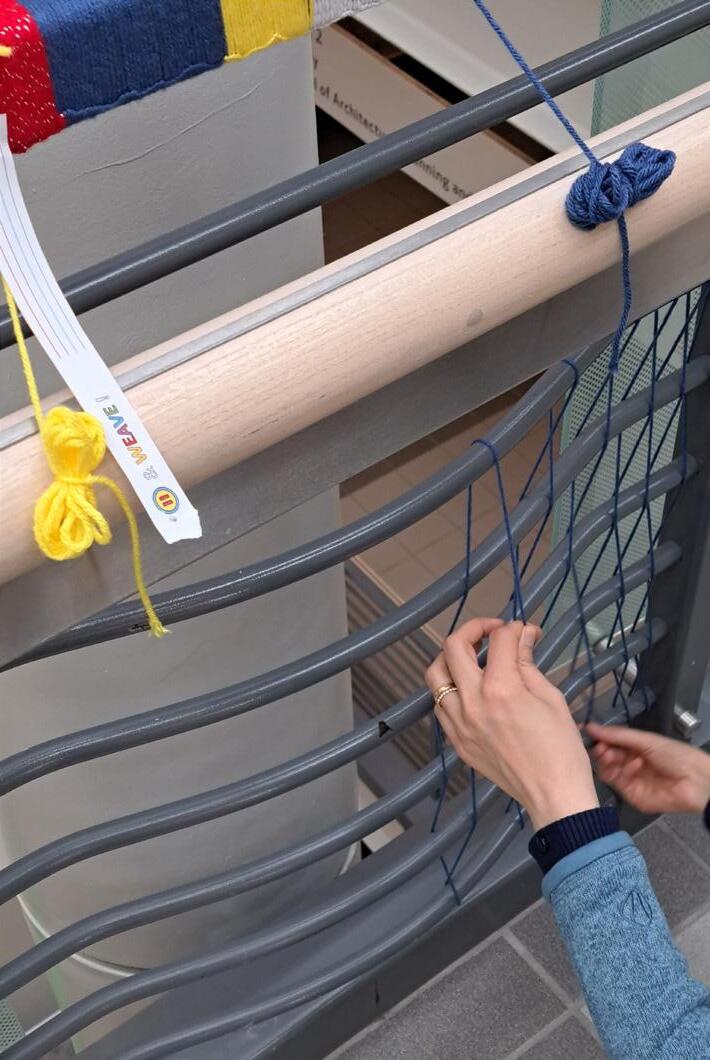


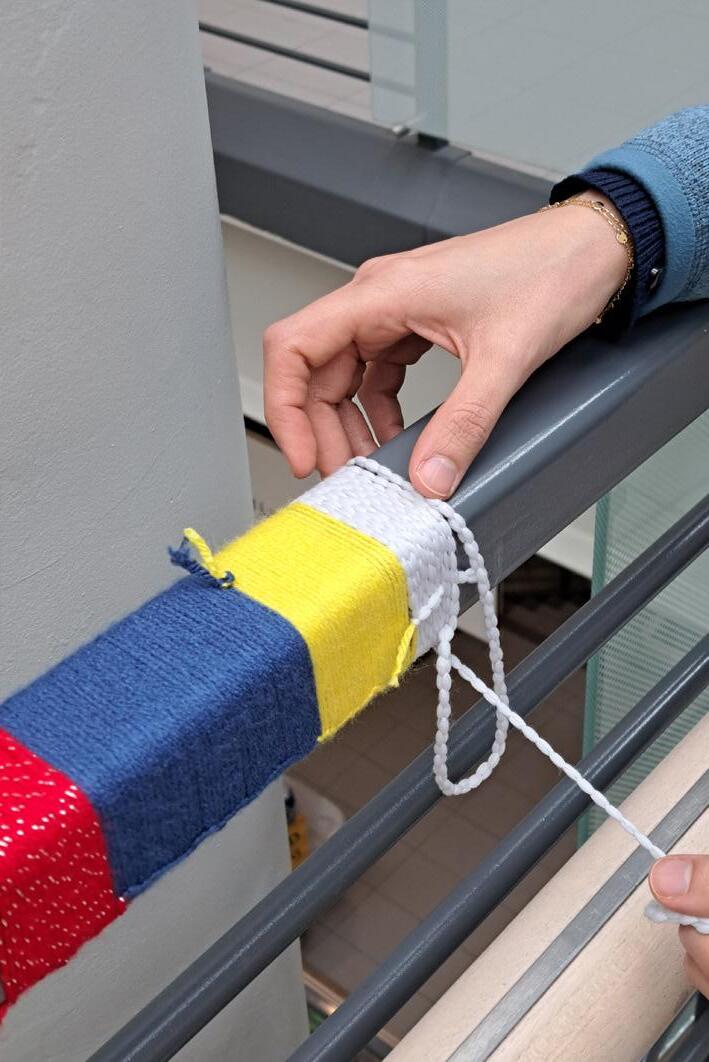








Pop-Up Loom investigates the collective construction of structures using accessible and cost-effective materials, such as pipes, paracord, and yarn, alongside straightforward techniques like knotting, weaving, tension, and modular assembly. Each side of the structure operates as a weaving machine that facilitates the communal practice of cultural crafts, including knitting bracelets and making rugs. The project highlights opportunities for further enhancement, such as improving joint connections to better withstand movement and instability during use. For instance, employing stronger or more rigid connectors or incorporating locking mechanisms could prevent loosening over time.
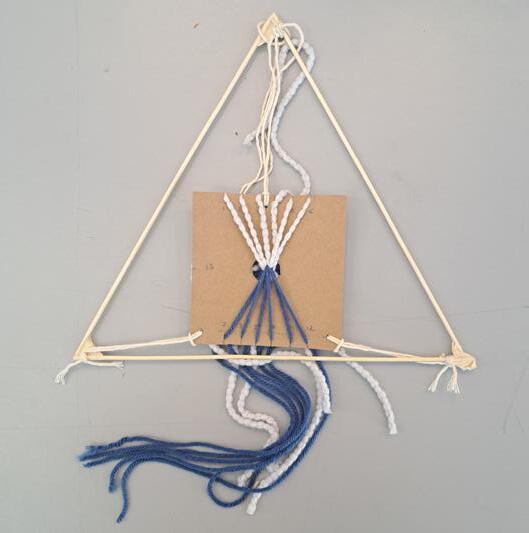


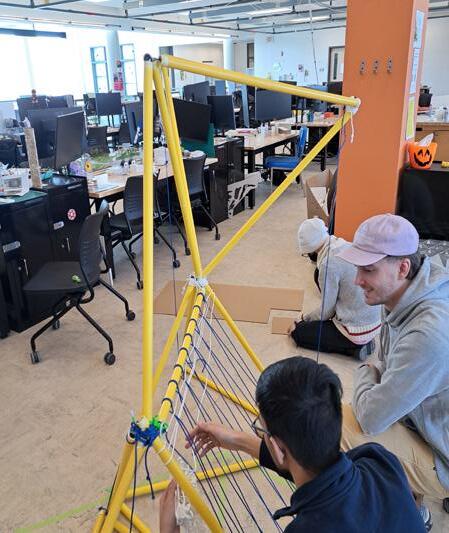

Cardboard Bench investigates the structural potential of paper-based materials by constructing a full-scale bench entirely from cardboard, without support from other materials. The design incorporates horizontally oriented cardboard rolls that form the seating surface, which rests on two plinths made of vertically interlocked cardboard elements. The bench effectively supports the weight of two individuals. Although functional, the project identifies areas for improvement: cardboard rolls used for seating demonstrate greater strength when oriented vertically rather than horizontally, while layered cardboard used for plinths performs better when oriented horizontally rather than vertically. Reorienting the cardboard materials for the seating and plinths could enhance overall support and improve the structure’s stability.
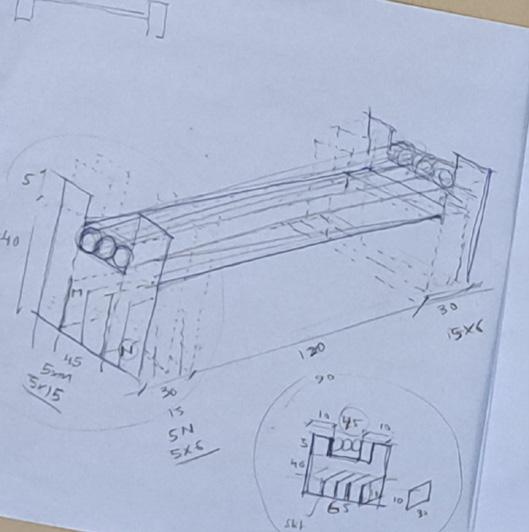
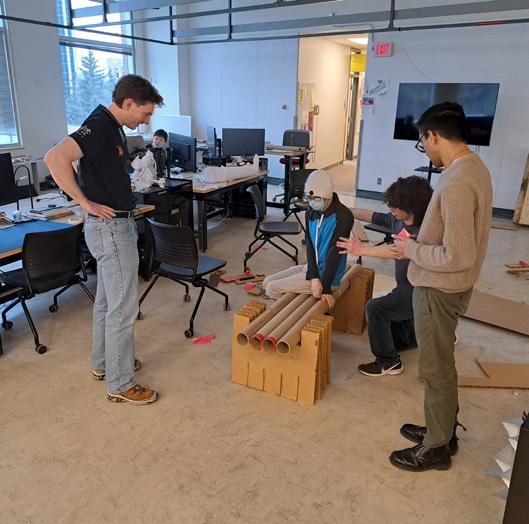


Printer paper.
Wood
Scrap wood.
Leftover foods.
Foldable, cuttable, and gains rigidity when folded. Traditional origami techniques.
Durable, versatile. Staining.
Natural, biodegradable.
Boiling, soaking, blending; used as stains, fabric dyes, or inks.
Yarn and cardboard. Flexible, fairly durable. Cardboard loom weaving.
Denim and fabric scraps.
Plastic waste.
Bacterial Cellulose
Yarn + Wood
Paper + Denim
Paper + Glue + Flour
Paper + Wood
Yarn, Paper
Paper, Bamboo Skewers
Paper, Ribbon, Glass Bottles
PVC Piping, Yarn
Cardboard
Homemade fermentation of black tea, sugar, water, and SCOBY.
Yarn and popsicle sticks.
Paper and denim fabric.
Scrap paper and sourced glue and flour.
Printer paper and pencil.
Skeins of colored yarn.
Sourced paper and bamboo panels.
Sourced paper, ribbon, bottles.
Durable, slightly flexible, with stiffness varying by thickness.
Durable, recyclable, and moldable.
Wet: thick and flexible
Dry: thin, durable, breathable, may shrink.
Lightweight, rigid frames with textured surfaces.
Rigid paper contrasts with soft, textured denim.
Wet: moldable Dry: lightweight and rigid.
Foldable paper, reinforced with a stable wooden handle.
Denim knotting, weaving, hand-sewing.
Filament extrusion, pellet printing, melting.
Kombucha-grown cellulose was dried and stretched over wire frames.
Wrapping, joint reinforcement, surface weaving.
Layering, combining materials for contrast and structure.
Papier-mâché (Layering, molding, sculpting).
Folding corrugated paper slides along a wooden base.
Flexible, lightweight, colorful. Weaving around handrails.
Writable, portable, easy to display.
Lightweight, portable, emotionally resonant.
Pipes, paracord, yarn. Semi-lightweight, modular.
Recycled cardboard.
Lightweight, strong in compression, variable strength by orientation.
Public writing, facilitated engagement.
Handwritten message, interactive display.
Knotting, weaving, tensioning, modular assembly.
Dry-assembled interlocking cardboards.
Two participants alternate cutting slits and threading yarn.
Individual or group roles include cutting, knotting, sewing.
Symbolizes peace and mindfulness in Japanese culture.
Promotes sustainability and creativity.
Revives natural dyeing.
Fosters cross-cultural practices.
Blends craft and recycling.
Two participants alternate joint wrapping and surface weaving.
The research lab in SAPL.
The research lab in SAPL.
Drop-in weaving activity.
Drop-in idea-sharing on boards activity.
Drop-in activity for taking or leaving “Message in a Bottle.”
Construction and testing by five team members.
Construction and testing by five team members.
Public handrails or communal spaces.
University hallway near the science theatres and in SAPL.
The research lab in SAPL
The research lab in SAPL.
Reduces waste, fosters innovation, raises environmental awareness.
Rooted in global food and textile traditions, especially those of East Asia.
Encourages craft-based collaboration for building light structures.
Encourages material exploration and reuse.
Promotes reuse and creativity; rooted in craft traditions.
Symbolizes protection, tradition, and craftsmanship.
Encourages community engagement and creative expression in public.
Encourages self-expression and community dialogue.
Builds support through creative exchange in a high-stress setting.
Promotes cultural craft practice and collaborative creativity.
Explores sustainable design and reuse of common materials.
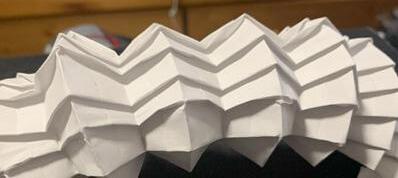

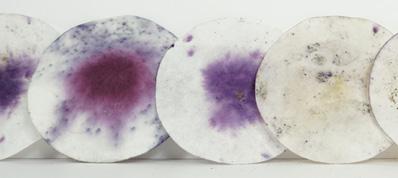
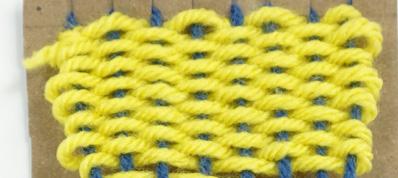

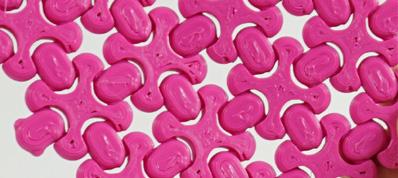
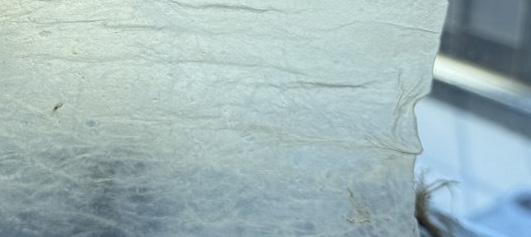

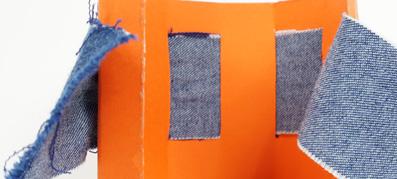

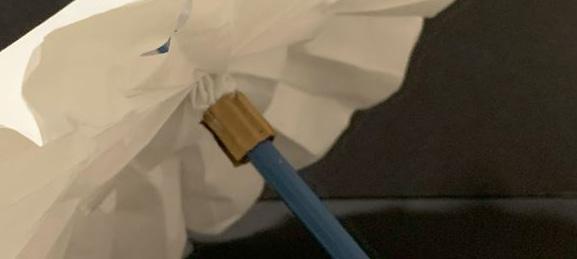





The relationship between gamification and materials is evident in how physical elements are utilized to invite, engage, and symbolize collective participation. Materials such as colored paper, cardboard, wood, recycled objects, and bottles function not only as tools but also as active agents in participation. They serve as tactile prompts that create a playful, interactive environment, encouraging spontaneous social interactions within the space.
These materials structure play and allow room for improvisation and storytelling. The following examples illustrate how the team’s gamification concepts translate into concrete, material-based activities. Each game uses these physical elements to foster engagement, collaboration, and creative expression, highlighting the vital role materials play in shaping playful social experiences. For instance, in Paper Zoo, a cardboard landscape becomes a collaboratively created world of origami animals. In Junk Towers, stacked materials transform teamwork into a visible, ever-changing sculpture. Oversized puzzle pieces scattered across campus in Puzzle Mural invite surprise and reward acts of communal care. Even a simple bottle in Clues in a Bottle holds potential for spatial discovery and playful competition. Through folding, stacking, returning, or unbottling, participants embed their actions into the material world, leaving traces of shared authorship.
Materials act as both medium and message, inviting spontaneous, playful engagement and transforming everyday spaces into dynamic, collective environments.
● ACCESSIBILITY
Paper Zoo utilizes basic materials, such as colored paper and cardboard, to minimize barriers to participation. Individuals passing by can briefly sit down, follow clear visual instructions, and fold an origami animal in their chosen color. Without the need for language skills or prior experience, participants add their creations to the cardboard “Zoo,” contributing to the evolving narrative. The activity is designed to be straightforward and accessible to everyone.
● SPONTANEITY
Junk Towers encourages spontaneous interaction through timed sessions in which participants construct the tallest tower using diverse, discarded materials. The temporary nature of these structures highlights the importance of iteration and creativity.
● TEMPORALITY
Clues in a Bottle encourages spontaneous engagement as participants follow concealed messages across various locations. The secure, portable bottles facilitate unexpected discoveries. This transient sequence of clues embodies the game’s dynamic nature, influenced by the unplanned actions of the participants.
● UNEXPECTEDNESS
Puzzle Mural utilizes large puzzle pieces distributed throughout the campus to create unexpected moments. Each piece is labeled with a message that reads, “Please return me to MacHall!” As more pieces are returned, the mural gradually takes shape as a collective artwork.


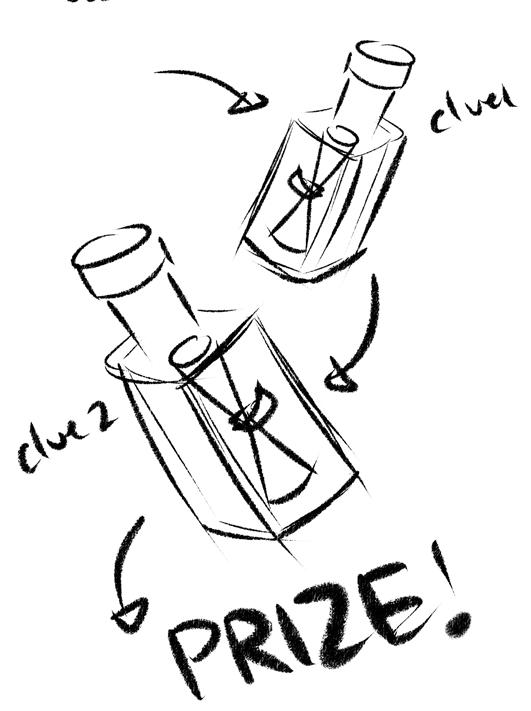

Connected Clusters is a board game prototype grounded in the four core principles of Games for Collective Making: accessibility, spontaneity, temporality, and unexpectedness. Designed as an interactive placemaking experience, the game invites participants to co-create a dynamic urban environment by placing elements based on actions determined by dice rolls. As the game progresses, participants address urban challenges, make spontaneous decisions, and collaboratively shape an evolving, engaging cluster.
Roll the Dice: Move your token around the perimeter of the board.
Take Actions: Follow instructions based on where your token lands—action, challenge (yellow card), reward (green card), parking lot (limit opponents), or corner (influence opponent’s quadrant).
Modify the Board: Add, remove, or adjust cubes (buildings), stripes (lanes), or patches (parks) based on the outcome.
Earn Points: Accumulate points for each element placed, with bonus points awarded for creating dynamic clusters.
The game can be played either competitively or collaboratively with minor adjustments. In both scenarios, the goal is to collectively create a vibrant, well-balanced city through shared decision-making.

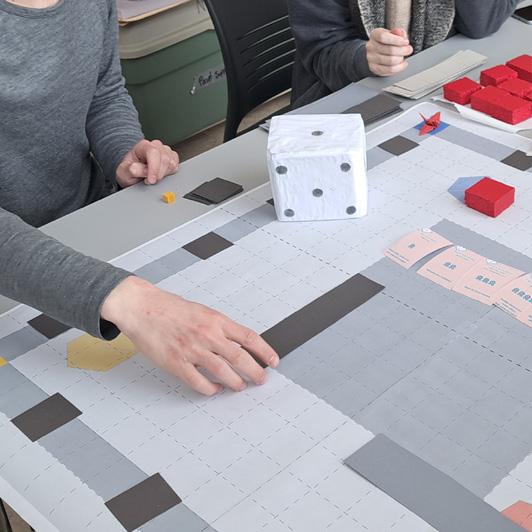

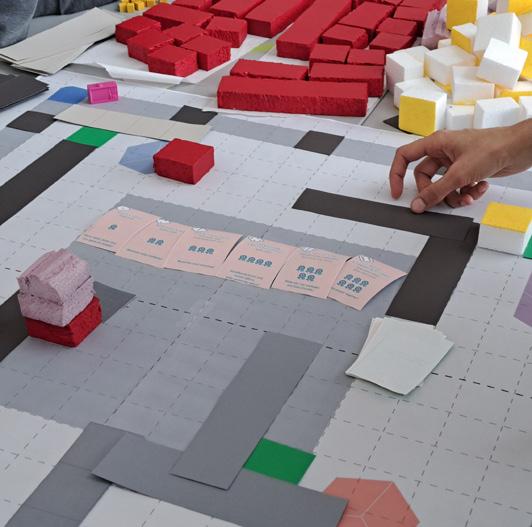
● Uses simple, tactile components: cubes (buildings), stripes (lanes), patches (parks), made of accessible material e.g. paper, styrofoam.
● No prior knowledge of urban design needed.
● Dice rolls and turn-based movement create on-the-spot decisions.
● Events, rewards, and challenges keep gameplay dynamic and open-ended.
● The board evolves as players place elements over time.
● Each round reflects temporary choices and changing strategies.
● Bonus points awarded for emergent, unplanned configurations.
● Surprising outcomes arise from collaborative and chance-based play.



Meaningful
Exploration
Constraints
Skills Gained
2. Material Relations
Surprise or Pushback
Material’s Voice
Non-human Influences
3. Material & Participation
Most Participatory Moments
Material/space Effect
4. Material & Placemaking
Placemaking Moment
Name of Created Space Material’s Placemaking role
Designing and refining functional prototypes from recycled materials.
Familiar paper medium; deep conversations via “Message in a Bottle.”
Limited woodworking experience and lack of advanced training. Tools and skill limitations.
A better understanding of research through design and collaboration.
Speaking thoughts aloud; communication in critiques and presentations.
Community board game design; unconventional materials.
Bacterial cellulose’s long growth time; team coordination challenges.
Design thinking; comfort working with soft, “nonarchitectural” materials.
The complexity of papiermâché when combining wood and paper.
“Please don’t send me to the landfill!”
Design tech, materials, deadlines, and success/ failure.
Origami’s therapeutic nature; the paper guided its own transformation.
“Transform me”; “Who am I now?”
Time as a crucial element shaping process and engagement.
Denim’s capacity changed when combined with paper.
“I carry the marks of my past, woven into this new story you’re creating.”
Sewing tools, recycled denim, turmeric dye, local weather.
The “pop-up loom” and “cardboard bench” workshops.
Home aided reflection; university enabled teamwork with resources.
“Cardboard bench” workshop with a shared goal and framework.
Blueprint/design vision was key for effective collaboration.
Board game co-design; everyone’s input shaped it.
Familiar, shareable materials enabled collaboration.
“What do you represent?” fostered a sense of place and belonging.
Paper and skewers, simple materials that invite accessible placemaking.
The “Everybody Zone”— an inclusive space for play, rest, and connection.
Hallway became a communal exchange via “Message in a Bottle.”
Universally accessible and playful; tangible keepsake deepened engagement.
A “bottleneck” – temporary convergence of people and ideas.
Group testing of materials created a shared space for making and storytelling.
Tactile materials served as soft, familiar invitations to co-create.
The “Patchwork Pavilion” – stitched with memory, craft, and openness.
5. Gamifying the Process
Game Metaphor for the Project
Maker’s Role in the Game
A board game players collaborate to collect pieces.
Facilitator of exploration.
A zoo—open-ended, experiential, non-competitive.
Zookeeper—guided experiences without controlling them.
A collaborative worldbuilding—players co-design a city with limited resources.
Material Alchemist— transformed materials to unlock new possibilities.
6. Looking Forward
New Possibilities
Suggestions for Inclusive Empowering Collaboration
The board game can engage communities and address issues.
The next phase should give low-voice community members a safe space to share and co-create, led by locals, not experts.
Co-design to link material experiments into the board game.
Understanding my teammates’ visions will help shape a final design that clearly conveys our shared story.
The board game can spark public dialogue on materials and reuse.
Open early project stages to the public—through drop-in workshops or material labs.
With each act of making—whether weaving, folding, cutting, or playing—collaborative practice generates a complex ecology of relationships across the spaces it inhabits. To fully understand how participation emerges through material engagement, the perspective should shift from linear processes to actor-networks (Latour, 2005). This approach accounts for the distributed, co-constituted agency of both human and non-human participants in the making process.
This project extends beyond participatory design and material practices that primarily focus on facilitation, authorship, or aesthetic outcomes. It examines how seemingly passive elements—such as cardboard, thread, turmeric, and the campus space— take on active roles in shaping decisions, movements, and meanings. The project adopts an Actor-Network Theory (ANT) framework to trace how co-creation is mobilized as an assemblage of diverse actors.
Throughout various phases of the project—from material experimentation to gamification—it was observed how different human actors (makers, co-creators, coordinators, etc.) do not act alone. Their practices are entangled with non-human participants, including materials (paper, wood, food, denim, etc.), tools (scissors, looms, sewing machines, etc.), spaces (the studio, hallway, etc.), and artifacts (Plastic Fidget, Message in a Bottle, Cardboard Bench, etc.). Together, these formed collaborative assemblages—temporary, purpose-oriented clusters held together by mutual influence and negotiation.
Coordinators
Co-creators
Workshop Supervisor Artifacts
Community
To understand co-creation as a dynamic and relational process, this project adopts CoCreation as Assemblage as a conceptual framework. Drawing on Actor-Network Theory (Latour, 2005), it frames collaboration not as a fixed method but as an evolving, networked practice. Participation emerges through shifting relationships among diverse entities—both human and non-human— across material, spatial, and symbolic dimensions. This framework comprises four interrelated layers—actor types, collaborative assemblage dimensions, scales of influence, and network dynamics.
Actor types encompass a broad range of participants. Human actors interact with nonhuman actors, tools, settings, and artifacts. Agency is distributed and relational, not fixed. In Message in a Bottle, materials such as ribbons and bottles invite emotional engagement, illustrating how non-human elements can encourage participation.
Collaborative Assemblage Dimensions examines the manifestation of co-creation. Functionally, materials fulfill specific roles— paracord offers support in Pop-Up Loom through knotting and tension. Spatially, a hallway is transformed into communal spaces, as illustrated in Pause & Weave!, where individuals contribute to an expanding woven surface. Relationally, weaving and knotting facilitate brief interactions and connections. Temporally, installations develop through gradual contributions. Symbolically, What Do You Represent? uses paper to invite expressions of identity.
Scales of Influence position these activities within broader contexts. On an individual level, reflection and choice affect how participants
engage with materials, such as creating bracelets. At the group level, participants collaboratively design the process and actions. Institutionally, access to space, scheduling, and budget shape possibilities and constraints. Neighborhood and city influences manifest in public engagement, particularly in Connected Clusters, where gameplay fosters civic dialogue. Network dynamics examine how actornetworks form, evolve, and dissolve. These networks are nested, ranging from individual actions—such as weaving—to broader institutional and civic levels. They are heterogeneous, integrating materials, facilitation, interactions, and structures into adaptable systems. Temporally layered, projects like Message in a Bottle have transitioned over time. Distributed across campus, these networks are embedded in social and institutional contexts, responding to constraints such as access. Above all, they are relationally generative, producing physical artifacts and fostering new connections, reflection, and care.
In summary, this framework reveals that co-creation extends beyond participatory engagement. It highlights a distributed ecology where meaning emerges through the interplay of tools, bodies, materials, and institutions. The collaborative practices in this project demonstrate how simple elements— such as a cardboard bench or a bottle—can reshape interaction and participation. Cocreation is not linear; instead, it unfolds as a choreography of assemblages—emergent, situated, and always in motion.
Nested (Spanning multiple levels, from individual to systemic)
Heterogeneous (Combining diverse actors and modes)
Temporal (Layered across past, present, and future)
Distributed (Operating across multiple spatial contexts)
Embedded (Situated within broader systems)
Relationally Generative (Evolving through mutual influence)
Scales of Influence
Collaborative Assemblage Dimensions
City (Governance, policies)
Neighborhood (Local stakeholders and publics)
Institutional (Organizational constraints, resources, and norms)
Team (Shared decision-making, interpersonal dynamics)
Personal (Individual agency, embodied experience)
Where influence circulates (from individual to city)?
What aspects define the cocreation?
Functional (What elements do / how they operate)
Spatial (Where interactions happen / spatial relations)
Relational (Who participates / how they relate)
Temporal (When actions unfold / sequencing and duration)
Symbolic (What elements signify / cultural and emotional)
Human: Makers, Co-creators, Coordinators, Community
Non-Human: Materials, Tools, Physical Space, Artifacts
Authors:
Mohammadmahdi Zanjanian
Project Lead, Next Calgary
PhD Student, Environmental Design School of Architecture, Planning, and Landscape
Ryan Lebell
PhD Student, Environmental Design School of Architecture, Planning, and Landscape
Craig Delean
Master of Planning Student School of Architecture, Planning, and Landscape
Noah Seeton Master of Planning Student School of Architecture, Planning, and Landscape
Vyas Gopal
Master of Architecture Student School of Architecture, Planning, and Landscape
Volunteer:
Fatemeh Saed Craft Contributor
Supervisor:
Fabian Neuhaus
Associate Professor School of Architecture, Planning, and Landscape



Collaborative Practice and Material explores how material transcends being merely a medium of construction; it serves as a communicative, symbolic, and relational entity that invites, resists, and transforms both participation and co-creation.